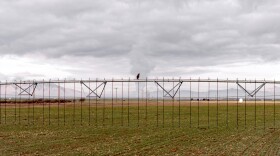-
Wyoming ranchers are testing GPS collars to help manage the movement of their livestock.
-
Levels of hazardous chemical pesticides in the nation’s groundwater are mostly on the decline, according to a new U.S. Geological Survey report.
-
Potash and phosphate are now on the 2025 critical minerals list.
-
Trust lands are not the same as most public lands. Public access to them can be restricted, and they're managed primarily to make money, usually for public schools.
-
The Bureau of Land Management’s Public Lands Rule put conservation on equal footing with grazing and energy production. The Trump administration is trying to roll it back.
-
The local land trust is hosting an event to give community members a chance to test-drive the technology in real time. It’s also partnering with three local ranchers, who are giving virtual fencing a try for the next couple of years.
-
As predators like grizzly bears and gray wolves expand their ranges or are being recovered to more habitats, wildlife managers in the Mountain West are increasingly tasked with preventing conflicts between the animals and people. Some are turning to new strategies and technologies, including drones.
-
A new study finds that what Americans eat — particularly beef — plays a major role in carbon emissions in cities. And cities in the Mountain West rank among those most heavily impacted.
-
Farmers in Wyoming and across the U.S. face many stressors and they have one of the highest rates of suicide of any occupation. Behavioral health care providers are now being taught a new method to identify depression, anxiety and other issues among farmers.
-
Gordon said a working group will present a strategy for investments in education, applied research, and innovative farm and ranch management.
© 2025 Wyoming Public Media
800-729-5897 | 307-766-4240
Wyoming Public Media is a service of the University of Wyoming
800-729-5897 | 307-766-4240
Wyoming Public Media is a service of the University of Wyoming

Play Live Radio
Next Up:
0:00
0:00
Available On Air Stations











